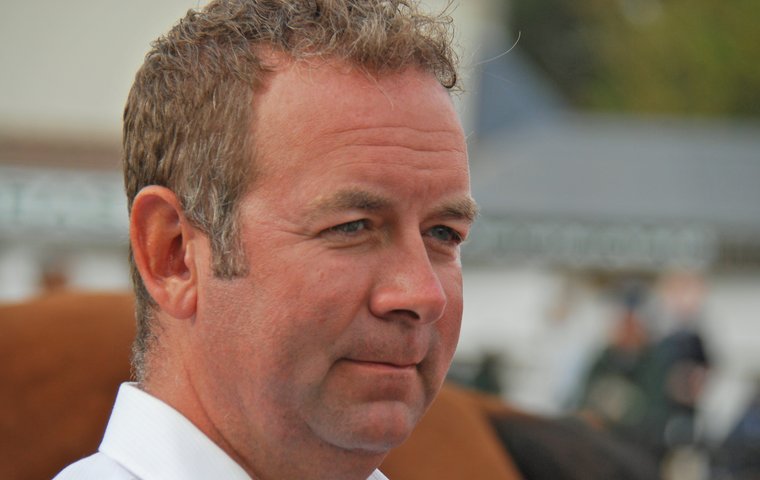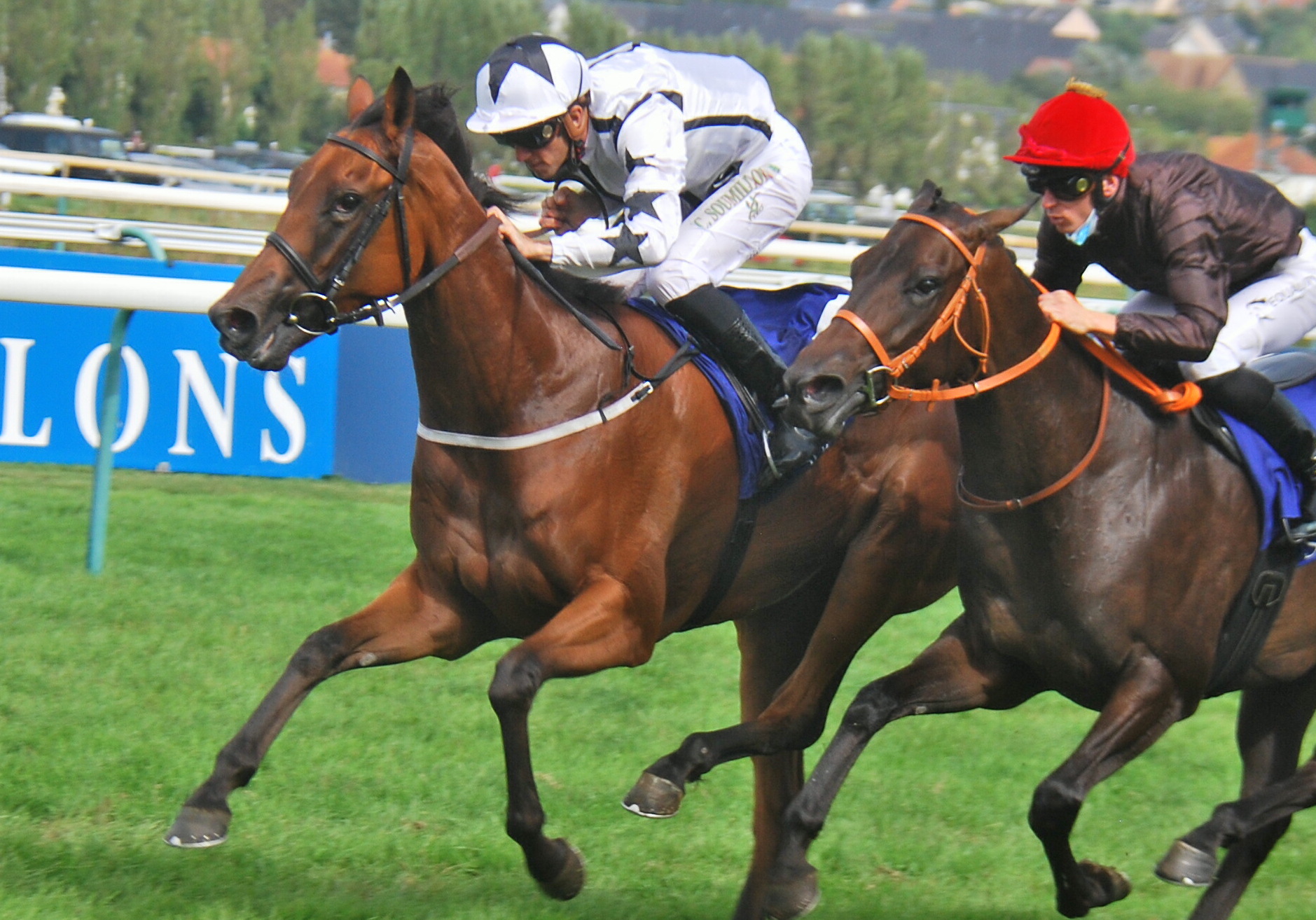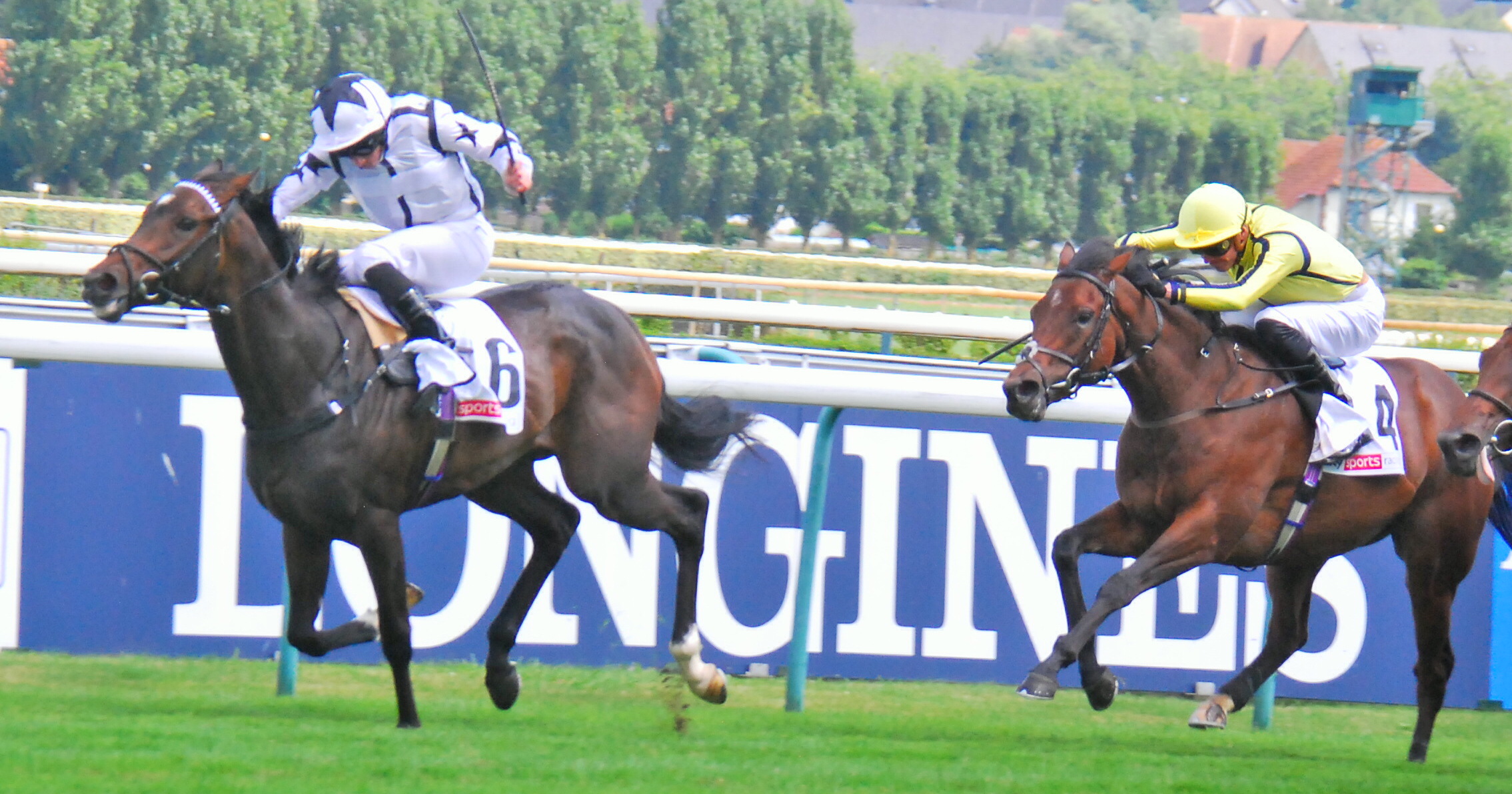
Nick Bradley has some record when it comes to finding value at the sales.
Take these four fillies:
- Fev Rover (by Gutafain) won a G2 in France last season and was third to Mother Earth in the Newmarket 1000 Guineas in May. UK owner Bradley has turned down seven-figure offers for her.
- Oscula (by Galileo Gold) won a G3 at Deauville in August, then ran third in three of the best juvenile fillies races in Europe. She’s also been the subject of some hefty offers from envious owners.
- Mystery Angel (by Kodi Bear), twice a winner at Newmarket, finished second to Snowfall in the Oaks at Epsom in June.
- Corazon (by Markaz) won a G3 at ParisLongchamp in September.
As well as winning some nice prize money, they’re all now valuable broodmare prospects, the kind of fillies even giant operations like Godolphin and Coolmore wouldn’t sneeze at.
You’d imagine Bradley would have had to fork out considerable sums for each of this quartet, yet look at the money he actually paid:
- £20,000 for Fev Rover
- 4,000 guineas for Oscula
- 11,000 guineas for Corazon
- 22,000 guineas for Mystery Angel
That’s less than £60,000 for four fillies who have each achieved a TRC Computer Rating of at least 107. It’s the stuff of fiction novels!
Bradley, one-time primary school teacher, one-time professional gambler, has cashed in on the skills he developed in those very different professions to make a success of his Nick Bradley Racing ownership syndicate (members pay £800 up front and £89 a month for two to three years for a 2.5 percent share in a horse).
The organisation has gone from strength to strength since it was formed six years ago and this season has claimed £743,549 in prize money, with particular success with 2-year-olds.
I caught up with Bradley on the second day of Arqana’s August yearling sales, where he had been busy examining potential yearling purchases.
“I have a list of 25, 30 or so yearlings that I am interested in bidding for tomorrow, but they have to match my valuation otherwise I don’t buy,” he said. “I go to as many European sales as I can, looking for athletic fillies with good conformation from sires who are not well-known. This means checking around 150 yearlings each day at Deauville. [I’m] always buying fillies as if they perform well on the track they then have added breeding value.”
In the end, Bradley didn’t buy any on that third day, but he purchased three at the V2 sale there the day after - by Air Force Blue, Shalaa and Whitecliffsofdover for €23,000, €40,000 and €22,000 respectively. That’s on the expensive side for Bradley, whose average spending has been around €20,000 per horse.
“My objective is to buy 40 yearlings this year and to maximise the joy for syndicate members while at the same time giving a return through being able to compete for the top races without breaking the bank.”
Bradley’s initial interest in racing came through gambling in his 20s.
“I was a primary school teacher who had lots of time off and used to spend my time gambling on cricket, golf, horseracing, both European and American,” he said. “I eventually gave up teaching to become a professional gambler and, in 2008, bought into Tim Palin’s newly formed Middleham Park Racing venture as a partner.”
He added, “The first horse I bought was the 3-year-old Exceptional Art [by Exceed And Excel] at the 2009 July Tattersalls horses-in-training sale for 45,000gns. I had expected the horse to go for around 100,000gns and hence my interest. The horse went on to win the Beverley Bullet sprint two months later in his first race, coming from last to first, trained by Dandy Nicholls.”
Bradley took over the role of buying horses for Middleham Park for four or five years. Successful Group horses purchased included DonjuanTriumphant, bought at Tattersalls breeze up sale for 30,000gns and G Force, bought for 25,000gns
“I bought G Force on the final day of the Tattersalls October 2014 sale, when hardly anybody was about. Nobody else was bidding for the 2-year-old filly, who had only had the one race and had not run badly,” said Bradley. “G Force went on to win the Group 1 Betfred Sprint Cup at Haydock and was then sold for a life-changing sum."
Bradley left Middleham Park in 2015, when the company had 600 members in various syndicates and over 100 winners a year, to set up his own Nick Bradley Racing syndicate.
The syndicate operates with three main people in key responsible positions. “I buy all the racehorses at the sales and organise the race entries and contact with the trainers,” he said.
Bradley enjoyed a big gambling win in 2010 after which he bought a house in Lincoln. He has also bought two stud farms during the past ten years, which are managed by Jason Park, to prepare yearlings bought at the sales before they go to a trainer. His partner, Sarah Jane, is in charge of the administrative side of the operation.
Bradley has 50 broodmares and sells around 20 to 30 foals and yearlings each year.
His results speak for themselves. Unlike most other owners, who leave race entry decisions to the trainer, Bradley considers he has more available time than a trainer - and has gained plenty enough experience. Currently the syndicate has 40 2-year-olds and 12 3-year-olds syndicated.
“May to November is an intensive period for me and, apart from the sales, I work with trainers, like George Boughey, Karl Burke and Richard Fahey, who give exceptional feedback through videos, including gallop work, which can be passed onto owners. I manage all the future race entries, particularly looking to place horses in black-type races, where the opposition seems weak for the grade.”
Recent success in France with Oscula and Corazon in G3s proves this point, as does Oscula’s third in two recent G2s, the Prix Calvados at Deauville and the Rockfel Stakes at Newmarket, and her third to Zellie in the G1 Prix Marcel Boussac at Paris Longchamp on Arc day.
The filly has won £137, 295, most of it in France. Not bad going for a horse who cost just 4,000 gns. “France offers bigger prize money and I am keen to send fillies over for the stakes races, where conditions are favourable,” said Bradley.
He has been busy at the recent annual September Osarus yearling sale at La Teste, South West France, snapping up three more relatively inexpensive filly yearlings, by Kheleyf, Born To Sea and Pedro The Great, for €16,000, €5,000 and €7,500 respectively.
Plenty of syndicate members go racing when their horse runs. “On a normal raceday, 20 percent of the syndicate turn up to watch their horse race, but 60 - around 50 percent - were there at Epsom on Oaks day, with Oscula winning and Mystery Angel second in the Oaks.”
For the future, Bradley has a clear objective. “The aim is for Nick Bradley Racing to be the leading 2-year-old owner in the next two years.
Judging by the track record so far in buying relatively cheap racehorses that are able to compete in Group races, who would want to bet against that?




